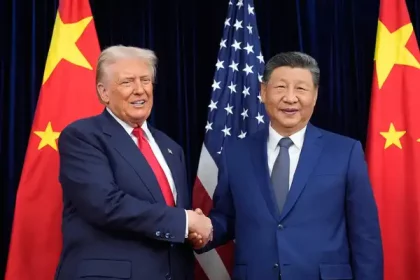Lieutenant Madhulika Negi Adjudged Best Student as Officers’ Transport Management Course Concludes at ASC Centre & College, Bengaluru
Course trains Indian and Friendly Foreign Country officers in advanced mechanical transport operations and logistics management.
Retired Major Vikrant Kumar Jaitly Para SF Detained in UAE, Sister Appeals for Help
The MEA's response and subsequent developments will be closely monitored in the coming weeks.
Lt Col Sumit Sharma Wins Top Honours at National IES Conference in Goa
Lt Col Sumit Sharma’s double win at the 33rd IES Conference showcases AFMC’s leadership in medical and dental research innovation.
ISRO Launches Heaviest-Ever Communication Satellite GSAT-7R, Boosting Indian Navy’s Maritime Network
ISRO’s GSAT-7R strengthens Navy’s communication network across the Indian Ocean, marking a milestone in India’s indigenous space capability.
Trump Warns Xi of ‘Consequences’ Over Taiwan Amid Fragile US-China Trade Truce
Trump’s Warning to Xi Highlights Taiwan as the Core Flashpoint in a Fragile US-China Reset.
Cochin Shipyard and Denmark’s Svitzer Join Hands to Build Advanced Electric TRAnsverse Tugboats in India
CSL–Svitzer Pact to Power India’s Green Maritime Future with Next-Gen Electric Tugboats.






